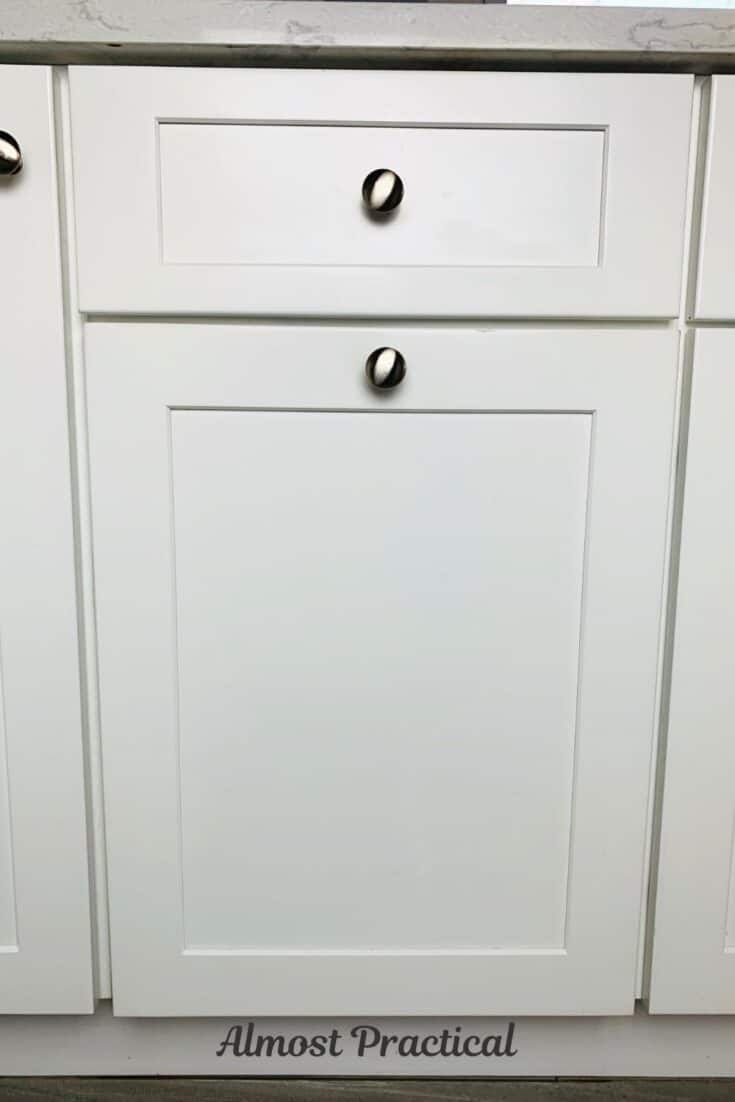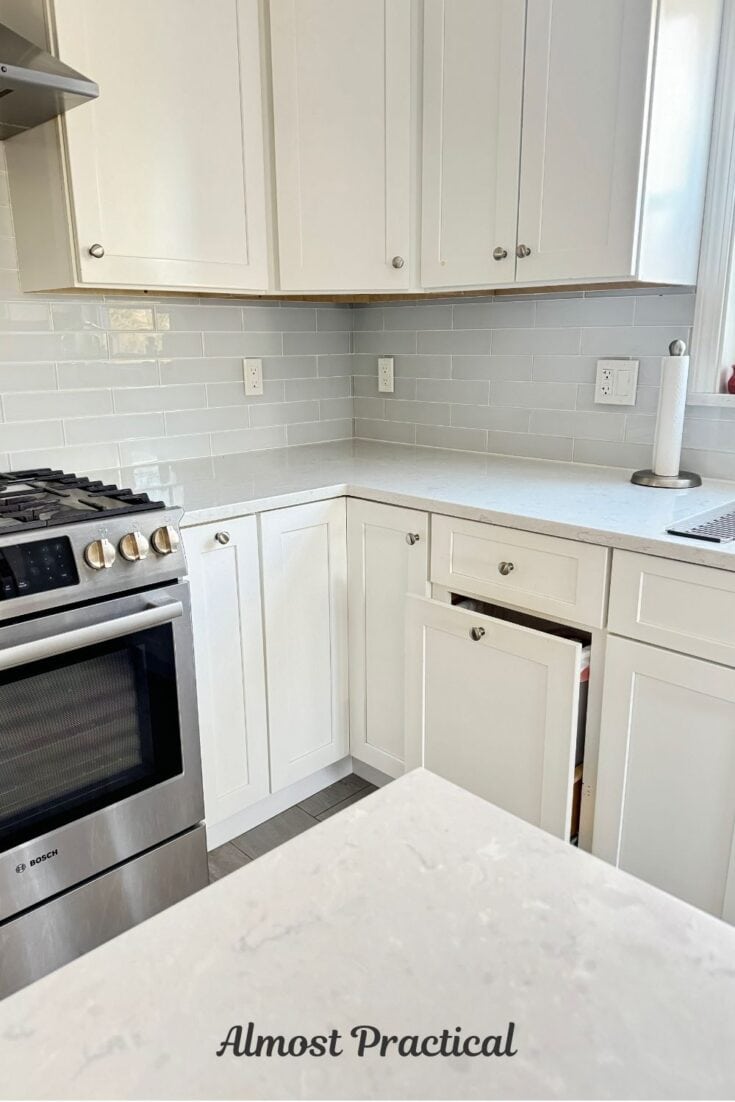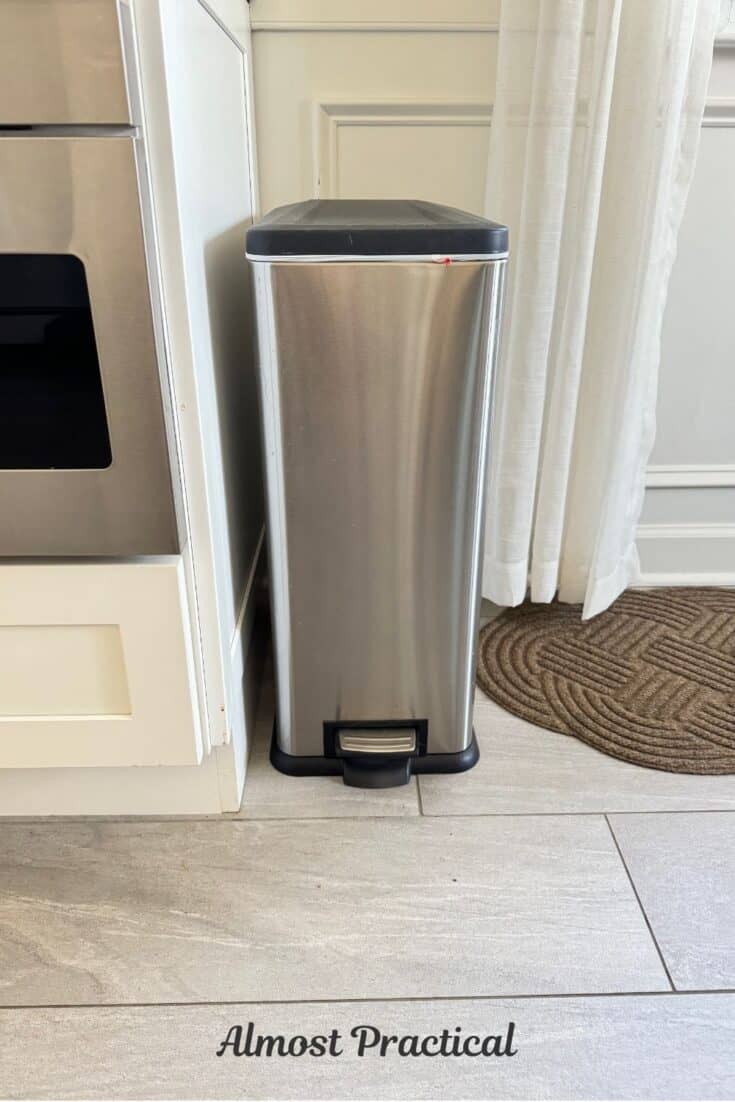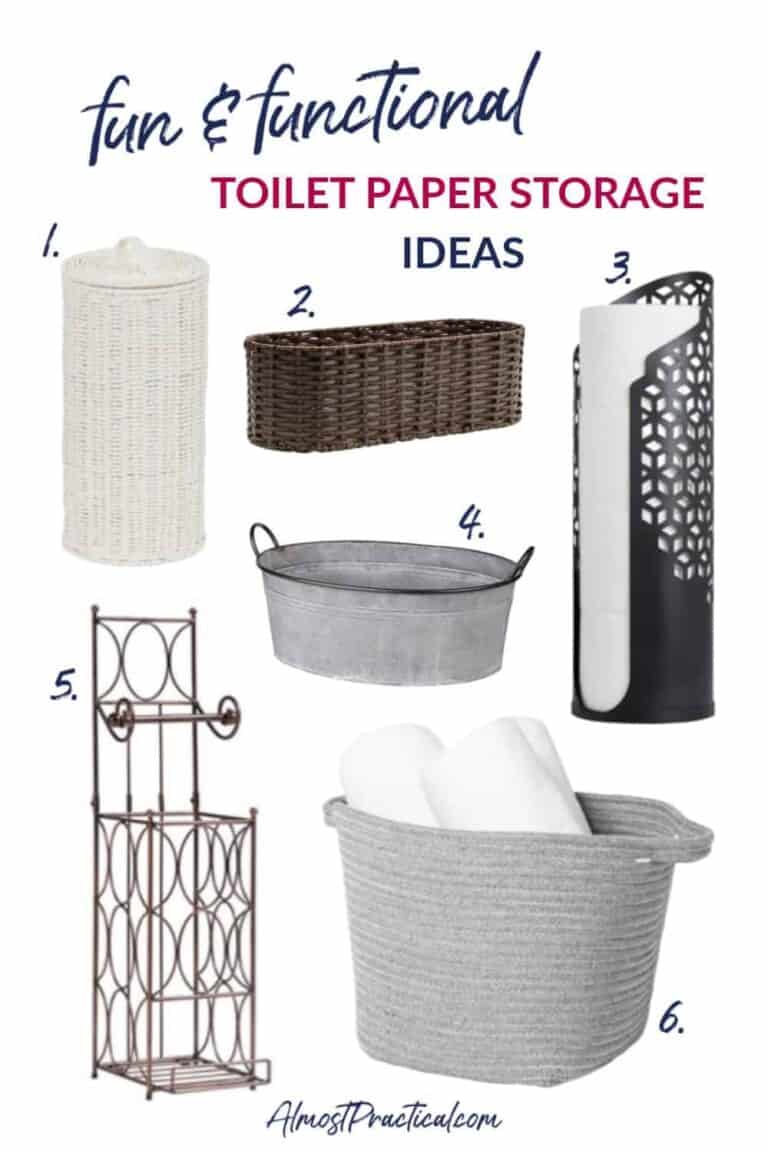Finding the Perfect Kitchen Trash Can Size for Your Space
This post may contain affiliate links which means I make a commission if you shop through my links.
Disclosure Policy
When it comes to kitchen trash cans, size matters. Whether you have a small kitchen or a large space, choosing the right size can make a big difference in your daily routine and that of your family.
We usually don’t give something as trivial as a kitchen trash much thought, but the size and the placement has a surprising affect on how efficient you can be in your kitchen.
This guide will help you find the perfect fit for your needs.

What Size is a Kitchen Trash Can?
Trash cans come in a few standard sizes and most manufacturers have products that fit these dimensions.
- Small: Typically around 4 to 7 gallons (approx. 20 qt), these are suitable for small households or as a secondary bin in a larger kitchen.
- Medium: Ranging from 8 to 13 gallons (approx. 36 qt), these are the most common sizes for kitchens and are suitable for most households.
- Large: Anything above 13 gallons is considered large. These are suitable for large households or areas where trash pickup is less frequent.
For most kitchens, the medium size trash can is the way to go.
These typically range from 8 to 13 gallons and can accommodate the needs of a medium to large household.
They are large enough to hold a decent amount of waste but also not so big that they become cumbersome.
Plus, they are compatible with standard trash bag sizes, making them easy to refill and replace.
And many pull out kitchen trash can cabinets are designed to hold one or two medium sized cans.
What Size Can is the Best Choice for Your Kitchen?
To determine the right sized trash cans for your kitchen, there are a lot of factors to consider.
Obviously the amount of space that you have in your kitchen for your trash can is important. But you should also give extra thought to factors like the number of people in your family and the amount of waste your household generates.
Pros and Cons of Large Trash Cans
While it might be tempting to opt for the largest trash can possible to minimize trips to the curb, an overly large trash can can be more trouble than it’s worth.
It can take up valuable floor space, be difficult to maneuver when full, and may encourage the accumulation of more trash than necessary.
Also, if your family doesn’t generate that much trash, you may need to take out the trash before you fill it up because:
- the contents might start to decompose and get smelly, or
- trash day will roll around and you will need to take the trash out even though the bag is mostly empty.
Instead, opt for a size that suits then needs of your household without being excessive.
Pros and Cons of Smaller Trash Cans
In a small kitchen, every inch counts.
Opting for a smaller trash can that fits neatly under your sink or in a corner can help save precious floor space.
In this case, you can look for slim, vertical designs or models specifically designed for under-sink cabinets.
However, there are a few downsides to a trash can that is too small.
First, it may not be big enough to handle the amount of trash that your household generates and placing the trash bin in high-traffic areas (like an under-sink trash can) can be frustrating.
If your family pitches in to clear the table after a meal, it will be difficult for family members to deposit kitchen waste into the trash can if someone is standing in front of the sink washing dishes – especially in tight spaces.
Placement in Your Kitchen
So, I have a unique solution that not a lot of people think about.
Instead of using one main waste receptacle – why not use two or more?
When we recently remodeled our kitchen, I installed the typical trash pull out in the lower kitchen cabinet next to the sink.

This cabinet holds two medium sized kitchen trash cans, one behind the other. I use the front one for waste disposal and the back one for recyclable materials.

However, the cabinet itself is located in the tight corner of our L shaped kitchen layout – wedged in the high traffic area between the sink, range, and corner of the kitchen island.

For our large family, during busy times of day, this spot became an actual traffic jam.
So, to alleviate this problem, I bought an attractive stainless steel trash can that opens with a foot pedal and placed it near the dining area. This trash can is a convenient medium size and fits standard 13-gallon trash bags.

This was a game changer!
People use this can to dump table scraps and paper waste after meals. And throughout the day, it keeps traffic out of the main kitchen area where someone (meaning me!) might be in the middle of food prep.
Of course, whether this solution works for you will depend on the available space that you have in your kitchen.
But it is certainly an option to consider.
Another alternative, if you have a small kitchen, is to use a garbage bowl on the countertop. You can fill this with scraps while you cook and then empty it periodically into the bigger receptacle.
Other Considerations
Here is a little more food for thought when choosing the right kitchen trash cans for your space.
Choosing the Right Trash Bags
When selecting a kitchen trash can size, think about the size of the trash bags you’ll be using.
A medium 13-gallon trash can, for example, is compatible with standard 13-gallon trash bags, making it easy to find replacements.
Larger or smaller trash cans may require specialty bags, which can be more expensive and harder to find.
Garbage Cans Go High Tech
I always love getting the latest and greatest in new technology – and trash cans are no exception.
You can find stainless steel models with features like motion sensors – they open with just a wave of your hand! Or even self sealing Smart Trash Cans that will self change the bag after you take the full one out.
These features can add convenience and style to your kitchen while still providing the functionality you need in a trash can.
The Best Trash Can for Your Space is One That Makes Life Easier
Ultimately, the best kitchen trash can is one that fits your space and lifestyle.
When making your buying decision, consider factors like
- available space,
- family size,
- frequency of use, and
- traffic patterns in your kitchen, and
- your kitchen decor.
Whether you opt for a small, under-sink model or a larger, stand-alone can, or something more high tech, be sure choose one that makes waste disposal easy and efficient.











